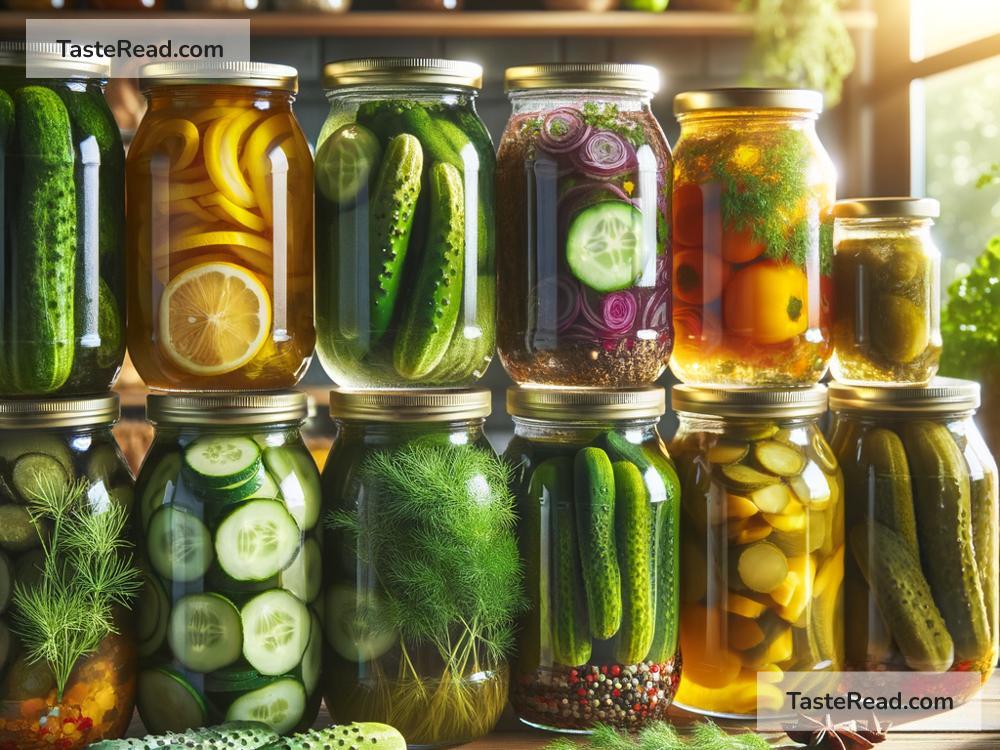The Joy of Pickling: Advanced Techniques for Mastering the Art of Preservation
Pickling is an age-old culinary technique that has zigzagged through cuisines around the globe, adding zest and tang to our plates. This process, which can transform mundane vegetables into crunchy, vinegary delights, is both an art and science. While basic pickling involves submerging vegetables in vinegar or brining them in salt water, mastering the art of pickling requires a bit more finesse. If you’re ready to elevate your pickling game beyond the simple cucumber pickle, you’ve come to the right place.
1. Understanding the Basics
Before we dive into the advanced techniques, let’s quickly revisit the basics. Pickling can be done in two primary ways: through vinegar (acid) or fermentation. Vinegar pickles are quick and easy, offering a sharp, tangy taste. Fermentation, on the other hand, is a slower process involving natural bacteria that create lactic acid, imparting a sour flavor and probiotic punch to your pickles. Both methods have their charms, but mastering both will give you versatility in the kitchen.
2. Experimenting with Flavors
One of the first steps to elevating your pickling is to play with flavors. Beyond the basic dill and garlic, consider adding spices and herbs like mustard seeds, coriander, turmeric, cinnamon, or even bay leaves to your brine. Each ingredient adds a unique layer of flavor, allowing you to create complex, nuanced pickles. Also, don’t shy away from mixing different vegetables and fruits in one jar. Imagine a jar filled with carrots, jalapenos, and onions, pickled in a brine with a touch of sweetness from apple cider vinegar and a hint of heat from red pepper flakes. The possibilities are endless!
3. The Art of Fermentation
Diving deeper into fermented pickles opens up a whole new world of textures and flavors. The key to successful fermented pickles is managing the salt concentration and temperature during the fermentation process. The salt concentration should be just right to encourage the growth of beneficial bacteria while inhibiting harmful ones. A general guideline is to use 2-3 tablespoons of salt per quart of water. As for temperature, the ideal range for fermentation is between 55°F and 75°F. Keeping your fermenting vessel in a cool, dark place can help maintain this temperature range.
It’s also worth exploring the use of whey or starter cultures to kickstart the fermentation process, especially for beginners. These can help ensure a successful ferment and reduce the risk of spoilage.
4. Playing with Textures
The texture of your pickles can significantly affect their enjoyment, and there are a few tricks to keeping your pickles crisp and crunchy. One technique is to trim the blossom end of cucumbers before pickling, as it contains enzymes that can soften pickles. Adding grape, oak, or horseradish leaves to your brine can also help, as these leaves are high in tannins, which help preserve crunch. For vinegar pickles, a brief soak in ice water before packing them into jars can also enhance their crunchiness.
5. Getting Creative with Presentation
The visual appeal of your pickles should not be overlooked. Experiment with slicing your vegetables in unique shapes and sizes, or layering them with colors and textures in the jar. This not only makes your pickles more visually appealing but can also impact their texture and flavor absorption. For example, thinly sliced radishes will pickle faster and absorb more vinegar than whole radishes, offering a different taste experience.
6. Patience and Practice
Mastering the art of pickling isn’t something that happens overnight. It involves a lot of experimentation, and sometimes, things might not go as planned. That’s perfectly okay! Each batch will teach you something new, whether it’s about flavor combinations, the importance of temperature control, or just how patient you can be while waiting for your pickles to reach perfection.
In the end, the journey of mastering pickling is as rewarding as enjoying the fruits (or vegetables) of your labor. With these advanced techniques in your culinary toolbox, you’re well on your way to becoming a pickle artisan. So, gather your jars, ready your spices, and embark on a flavorful expedition that promises to make your taste buds dance with delight. Happy pickling!


